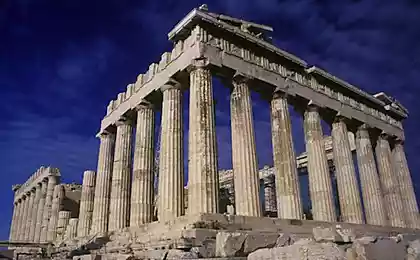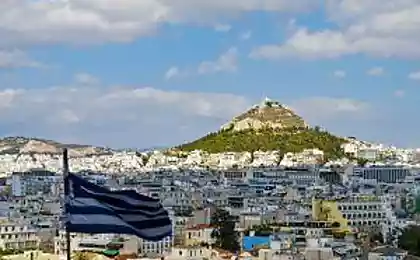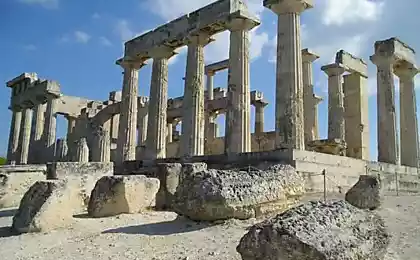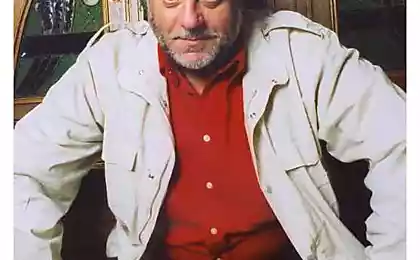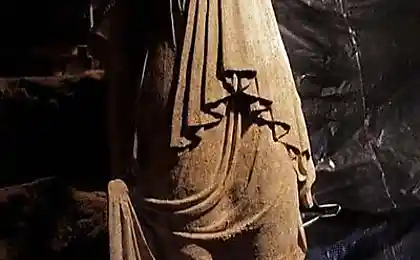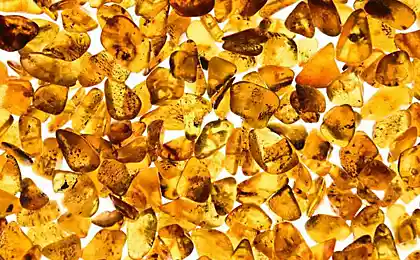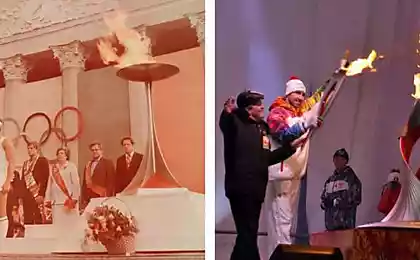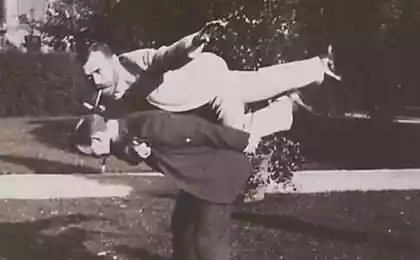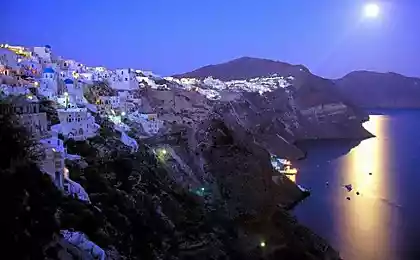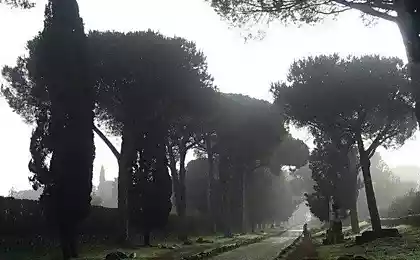460
Tomb of the time of Alexander the Great in Greece - open a third room
The building is called one of the most important discoveries in Greek archaeology in recent years, and local media arguing about who can be buried in the tomb.
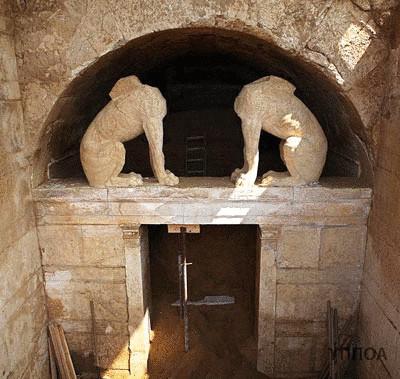
The entrance to the tomb in Amphipolis.
Archaeologists entered the third chamber in the tomb on the hill Kasta in Amphipolis (104 kilometers East of Thessaloniki, Greece). This building dates from the time of Alexander the great and, according to experts, was built by his chief architect – Dinocrates (Dinocrates). Excavations conducted by the team of archaeologists under the direction of Katerina Peristeri (Peristeri Katerina)
The new camera is a room with a semicircular arch filled with soil. On the limestone walls of the tomb are traces of red paint.
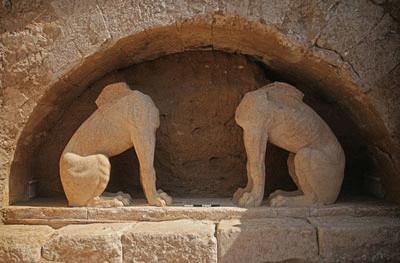
Sphinxes, "guarding" the entrance to the tomb.
Tomb in Kasta hill is surrounded by an imposing wall, the perimeter of which is about 490 meters. Originally the mound was a statue of a lion, a height of about 5 meters. Now she moved to a nearby road.
In August, archaeologists have discovered two partially destroyed the statue of the Sphinx, who "guarded" the entrance to the burial complex. The sphinxes were about 1.5 meters in height. The weight of each – about 1.5 tons. The heads and wings of creatures lost.
Over the last few weeks in the tomb were discovered mosaic floors, and two caryatids – female statues that served as columns or supports, standing on guard at the second doorway.
Mosaic which covered the floors consisted of irregular pieces of white marble laid on a red background.
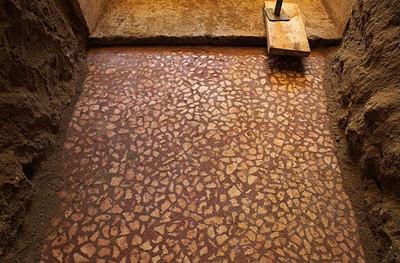
Mosaic in the first chamber of the tomb.
Caryatids carved out of marble brought from the island of Thasos. They have traces of blue and red paint. Sculptures stand between two marble pillars supporting a beam of the ceiling. Caryatids dressed in tunics, they have earrings. The girls have long, thick hair covering their shoulders. The face of one of the caryatids is preserved almost in its original form, the second is lost. Pieces of the palms and fingers of fragments of sculpture were recovered from the soil that filled the chamber.
"The right arm of the Western Caryatid and the left arm of the East stretched, as if they symbolically warn against any attempt to enter the burial place", according to the Ministry of culture of Greece.

One of the caryatids that support the ceiling of the entrance to the second chamber.
During excavations were also found three architectural details of the epistyle (the lower part of the entablature). They are also traces of blue and red paint.
Archaeologists tight-lipped about who could find rest in the tomb. Some experts not involved in the excavation, suggesting that it could be buried one of the companions of Alexander the great or one of his relatives. But it is certainly not Alexander himself – the written sources say he was buried in Alexandria (although his burial is not found).
Excavations at the Kasta hill are continuing.
Source: nkj.ru

The entrance to the tomb in Amphipolis.
Archaeologists entered the third chamber in the tomb on the hill Kasta in Amphipolis (104 kilometers East of Thessaloniki, Greece). This building dates from the time of Alexander the great and, according to experts, was built by his chief architect – Dinocrates (Dinocrates). Excavations conducted by the team of archaeologists under the direction of Katerina Peristeri (Peristeri Katerina)
The new camera is a room with a semicircular arch filled with soil. On the limestone walls of the tomb are traces of red paint.

Sphinxes, "guarding" the entrance to the tomb.
Tomb in Kasta hill is surrounded by an imposing wall, the perimeter of which is about 490 meters. Originally the mound was a statue of a lion, a height of about 5 meters. Now she moved to a nearby road.
In August, archaeologists have discovered two partially destroyed the statue of the Sphinx, who "guarded" the entrance to the burial complex. The sphinxes were about 1.5 meters in height. The weight of each – about 1.5 tons. The heads and wings of creatures lost.
Over the last few weeks in the tomb were discovered mosaic floors, and two caryatids – female statues that served as columns or supports, standing on guard at the second doorway.
Mosaic which covered the floors consisted of irregular pieces of white marble laid on a red background.

Mosaic in the first chamber of the tomb.
Caryatids carved out of marble brought from the island of Thasos. They have traces of blue and red paint. Sculptures stand between two marble pillars supporting a beam of the ceiling. Caryatids dressed in tunics, they have earrings. The girls have long, thick hair covering their shoulders. The face of one of the caryatids is preserved almost in its original form, the second is lost. Pieces of the palms and fingers of fragments of sculpture were recovered from the soil that filled the chamber.
"The right arm of the Western Caryatid and the left arm of the East stretched, as if they symbolically warn against any attempt to enter the burial place", according to the Ministry of culture of Greece.

One of the caryatids that support the ceiling of the entrance to the second chamber.
During excavations were also found three architectural details of the epistyle (the lower part of the entablature). They are also traces of blue and red paint.
Archaeologists tight-lipped about who could find rest in the tomb. Some experts not involved in the excavation, suggesting that it could be buried one of the companions of Alexander the great or one of his relatives. But it is certainly not Alexander himself – the written sources say he was buried in Alexandria (although his burial is not found).
Excavations at the Kasta hill are continuing.
Source: nkj.ru
Scientists have synthesized a molecule of a new form
As cervical osteochondrosis influence on our state
